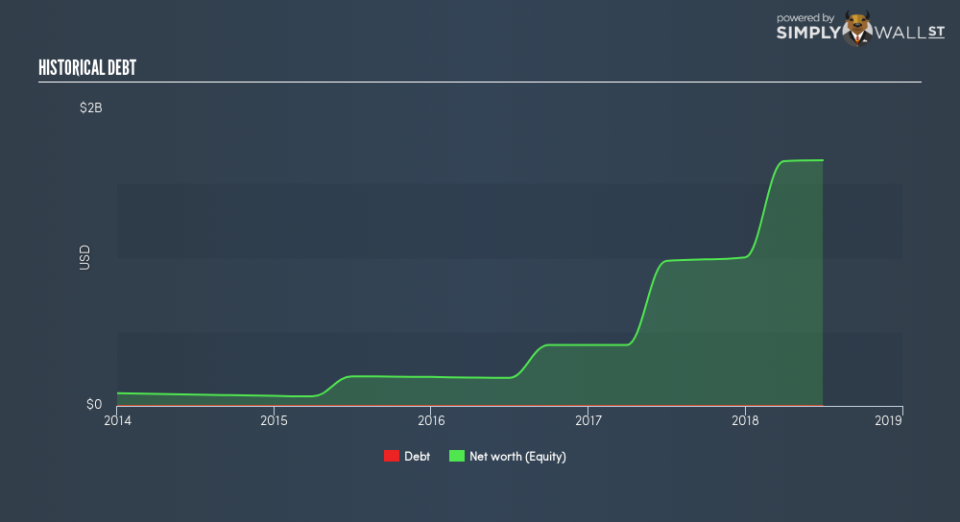Why Shopify Inc (NYSE:SHOP) Is A Financially Healthy Company

Shopify Inc (NYSE:SHOP), a large-cap worth US$17.34b, comes to mind for investors seeking a strong and reliable stock investment. Most investors favour these big stocks due to their strong balance sheet and high market liquidity, meaning there are an adundance of stock in the public market available for trading. In times of low liquidity in the market, these firms won’t be left high and dry. They are also relatively unaffected by increases in interest rates. Today I will analyse the latest financial data for SHOP to determine is solvency and liquidity and whether the stock is a sound investment.
Check out our latest analysis for Shopify
Does SHOP face the risk of succumbing to its debt-load?
A debt-to-equity ratio threshold varies depending on what industry the company operates, since some requires more debt financing than others. Generally, large-cap stocks are considered financially healthy if its ratio is below 40%. The good news for investors is that Shopify has no debt. It has been operating its business with zero debt and utilising only its equity capital. Investors’ risk associated with debt is virtually non-existent with SHOP, and the company has plenty of headroom and ability to raise debt should it need to in the future.
Does SHOP’s liquid assets cover its short-term commitments?
Given zero long-term debt on its balance sheet, Shopify has no solvency issues, which is used to describe the company’s ability to meet its long-term obligations. However, another measure of financial health is its short-term obligations, which is known as liquidity. These include payments to suppliers, employees and other stakeholders. Looking at SHOP’s most recent US$132.4m liabilities, it appears that the company has maintained a safe level of current assets to meet its obligations, with the current ratio last standing at 12.89x. However, a ratio greater than 3x may be considered as too high, as SHOP could be holding too much capital in a low-return investment environment.
Next Steps:
SHOP has zero-debt as well as ample cash to cover its near-term liabilities. Its safe operations reduces risk for the company and its investors, though, some level of debt may also ramp up earnings growth and operational efficiency. I admit this is a fairly basic analysis for SHOP’s financial health. Other important fundamentals need to be considered alongside. I recommend you continue to research Shopify to get a more holistic view of the stock by looking at:
Future Outlook: What are well-informed industry analysts predicting for SHOP’s future growth? Take a look at our free research report of analyst consensus for SHOP’s outlook.
Valuation: What is SHOP worth today? Is the stock undervalued, even when its growth outlook is factored into its intrinsic value? The intrinsic value infographic in our free research report helps visualize whether SHOP is currently mispriced by the market.
Other High-Performing Stocks: Are there other stocks that provide better prospects with proven track records? Explore our free list of these great stocks here.
To help readers see past the short term volatility of the financial market, we aim to bring you a long-term focused research analysis purely driven by fundamental data. Note that our analysis does not factor in the latest price-sensitive company announcements.
The author is an independent contributor and at the time of publication had no position in the stocks mentioned. For errors that warrant correction please contact the editor at editorial-team@simplywallst.com.

